Themed collection 2021 RSC Chemical Biology HOT Article Collection

Nanobodies as in vivo, non-invasive, imaging agents
In vivo imaging has become in recent years an incredible tool to study biological events and has found critical applications in diagnostic medicine.

RSC Chem. Biol., 2021,2, 685-701
https://doi.org/10.1039/D1CB00023C
Design and synthesis of metabolic chemical reporters for the visualization and identification of glycoproteins
This review details a brief history of the synthesis and characterization of metabolic chemical reporters used to study glycosylation before describing recent applications and finishing with considerations and limitations of reporter molecules.

RSC Chem. Biol., 2021,2, 306-321
https://doi.org/10.1039/D1CB00010A
Fragment-based covalent ligand discovery
Covalent fragment-based ligand discovery greatly facilitates the discovery of useful fragments for drug discovery and helps unveil chemical-tractable biological targets in native biological systems.
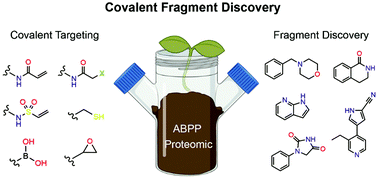
RSC Chem. Biol., 2021,2, 354-367
https://doi.org/10.1039/D0CB00222D
Biological functions of supramolecular assemblies of small molecules in the cellular environment
Supramolecular assemblies of small molecules, exhibiting emergent properties, are becoming a new and dynamic molecular platform for biological functions and for developing novel therapeutic approaches.
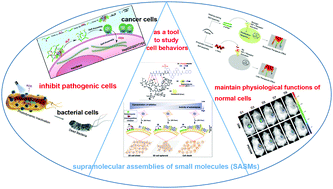
RSC Chem. Biol., 2021,2, 289-305
https://doi.org/10.1039/D0CB00219D
Structural motifs and intramolecular interactions in non-canonical G-quadruplexes
G-rich nucleic acid sequences encompassing G-tracts of varying lengths can fold into different non-canonical G-quadruplexes with distinct structural features.
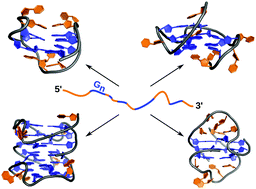
RSC Chem. Biol., 2021,2, 338-353
https://doi.org/10.1039/D0CB00211A
Development and biological applications of sulfur–triazole exchange (SuTEx) chemistry
This review discusses the development of sulfonyl–triazoles and highlights the merits and opportunities for deploying this sulfur electrophile for biological discovery.
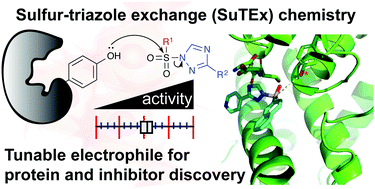
RSC Chem. Biol., 2021,2, 322-337
https://doi.org/10.1039/D0CB00180E
The chemical biology of coronavirus host–cell interactions
Chemical biology strategies can play important roles in studying the complexity of SARS-CoV-2–host interactions at molecular level detail.

RSC Chem. Biol., 2021,2, 30-46
https://doi.org/10.1039/D0CB00197J
Transfer hydrogenation catalysis in cells
Recent developments in transfer hydrogenation catalysis and photocatalysis in cancer cells by synthetic metal complexes are reviewed. They offer exciting new ways to modulate biochemical pathways for drug development and biotechnology.
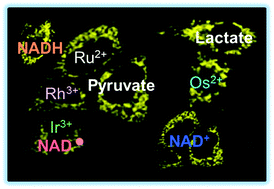
RSC Chem. Biol., 2021,2, 12-29
https://doi.org/10.1039/D0CB00150C
DNA folds threaten genetic stability and can be leveraged for chemotherapy
Alternative DNA structures (including G-quadruplexes and DNA junctions) represent promising targets for combinatorial chemotherapeutic treatments aiming at fostering genomic instability and impeding DNA repair.
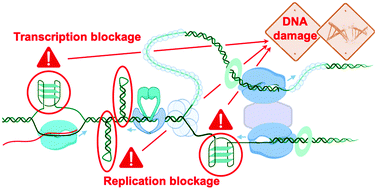
RSC Chem. Biol., 2021,2, 47-76
https://doi.org/10.1039/D0CB00151A
Matters of class: coming of age of class III and IV lanthipeptides
In this review, we give a concise overview of the known biosynthetic princples of class III and IV lanthipeptide synthtases.

RSC Chem. Biol., 2020,1, 110-127
https://doi.org/10.1039/D0CB00073F
Tools for functional dissection of site-specific O-GlcNAcylation
An overview of the latest tools and technologies to investigate the roles of site-specific O-GlcNAcylation in vitro and in vivo.
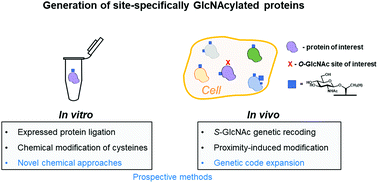
RSC Chem. Biol., 2020,1, 98-109
https://doi.org/10.1039/D0CB00052C
Deciphering the substrate recognition mechanisms of the heparan sulfate 3-O-sulfotransferase-3
Co-crystallization and biochemical analyses with structurally defined oligosaccharides show the low reactivity of HS 3-OST-3 toward 6-O-sulfated substrates is due to inhibition of enzyme activity by 6-O-sulfated oligosaccharides.

RSC Chem. Biol., 2021,2, 1239-1248
https://doi.org/10.1039/D1CB00079A
Metathramycin, a new bioactive aureolic acid discovered by heterologous expression of a metagenome derived biosynthetic pathway
Heterologous expression of an aromatic polyketide biosynthetic gene cluster recovered from a New Zealand soil metagenome library resulted in the discovery of new bioactive aureolic acids.
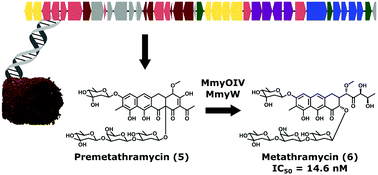
RSC Chem. Biol., 2021,2, 556-567
https://doi.org/10.1039/D0CB00228C
Hyaluronan (HA)-inspired glycopolymers as molecular tools for studying HA functions
Glycopolymers based on hyaluronan (HA) were synthesised as homopolymers and alternating copolymers and used as probes to study the interactions with known HA-binding proteins and peptides.
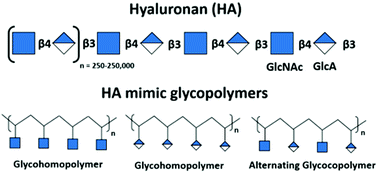
RSC Chem. Biol., 2021,2, 568-576
https://doi.org/10.1039/D0CB00223B
Revision in the first steps of the biosynthesis of the red antibiotic prodigiosin: use of a synthetic thioester to validate a new intermediate
A revision is proposed to the biosynthetic pathway to the well-known red pigment prodigiosin via a new thioester intermediate.

RSC Chem. Biol., 2021,2, 551-555
https://doi.org/10.1039/D0CB00173B
Site-specific modification and segmental isotope labelling of HMGN1 reveals long-range conformational perturbations caused by posttranslational modifications
Using protein semi-synthesis, segmentally isotope-labelled variants of nucleosome-binding protein HMGN1 were generated with site-specific posttranslational modifications to explore their structural and functional effects.

RSC Chem. Biol., 2021,2, 537-550
https://doi.org/10.1039/D0CB00175A
In vivo modulation of ubiquitin chains by N-methylated non-proteinogenic cyclic peptides
Cyclic peptides containing unnatural amino acids can modulate Lys-48 ubiquitin chains in cells and animals.

RSC Chem. Biol., 2021,2, 513-522
https://doi.org/10.1039/D0CB00179A
In silico peptide-directed ligand design complements experimental peptide-directed binding for protein–protein interaction modulator discovery
Using the protein–protein interaction of Mcl-1/Noxa, two methods for efficient modulator discovery are directly compared.
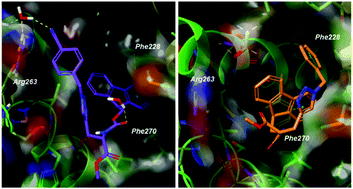
RSC Chem. Biol., 2021,2, 215-219
https://doi.org/10.1039/D0CB00148A
A peptidic inhibitor for PD-1 palmitoylation targets its expression and functions
We show for the first time that PD-1 is palmitoylated, identify DHHC9 as the predominant enzyme for its palmitoylation, and reveal the molecular mechanisms underlying its effects on PD-1 stability and functions. Importantly, we also designed PD1-PALM, a competitive inhibitor of PD-1 palmitoylation, and this first-in-class molecule may inspire the development of new checkpoint inhibitors.
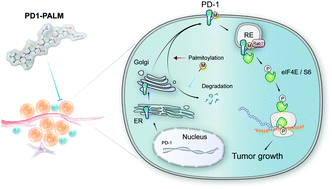
RSC Chem. Biol., 2021,2, 192-205
https://doi.org/10.1039/D0CB00157K
Structural and biophysical insights into the mode of covalent binding of rationally designed potent BMX inhibitors
We identified potent, functionalisable BMX inhibitors and revealed their covalent mode of binding to BMX by X-ray crystallography.
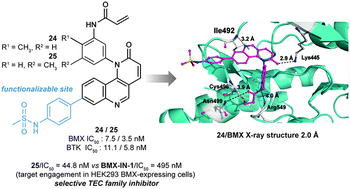
RSC Chem. Biol., 2020,1, 251-262
https://doi.org/10.1039/D0CB00033G
Enhancing the enthalpic contribution of hydrogen bonds by solvent shielding
Altering local dielectric properties induced by solvent shielding, enhances polar interactions and leads to enthalpically driven recognition of polar substrates.

RSC Chem. Biol., 2020,1, 281-287
https://doi.org/10.1039/D0CB00108B
Sub-stoichiometric inhibition of IAPP aggregation: a peptidomimetic approach to anti-amyloid agents
Naphthalimide-appended oligopyridylamide peptidomimetic modulate islet amyloid polypeptide amyloidogenesis and disaggregate preformed oligomers and fibrils into non-toxic conformations at substoichiometric concentration.
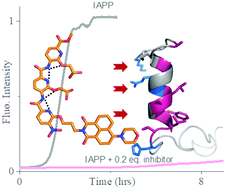
RSC Chem. Biol., 2020,1, 225-232
https://doi.org/10.1039/D0CB00086H
A thorough analysis and categorization of bacterial interrupted adenylation domains, including previously unidentified families
In-depth study of intriguing bacterial interrupted adenylation domains from seven distinct families and six different types.
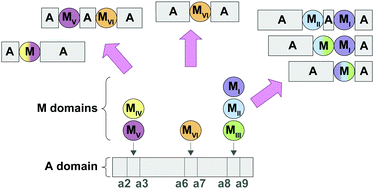
RSC Chem. Biol., 2020,1, 233-250
https://doi.org/10.1039/D0CB00092B
About this collection
Welcome to our inaugural HOT article collection.
This collection celebrates the very best work published in RSC Chemical Biology.
We hope you enjoy reading these articles and congratulations to all the authors whose articles are featured.